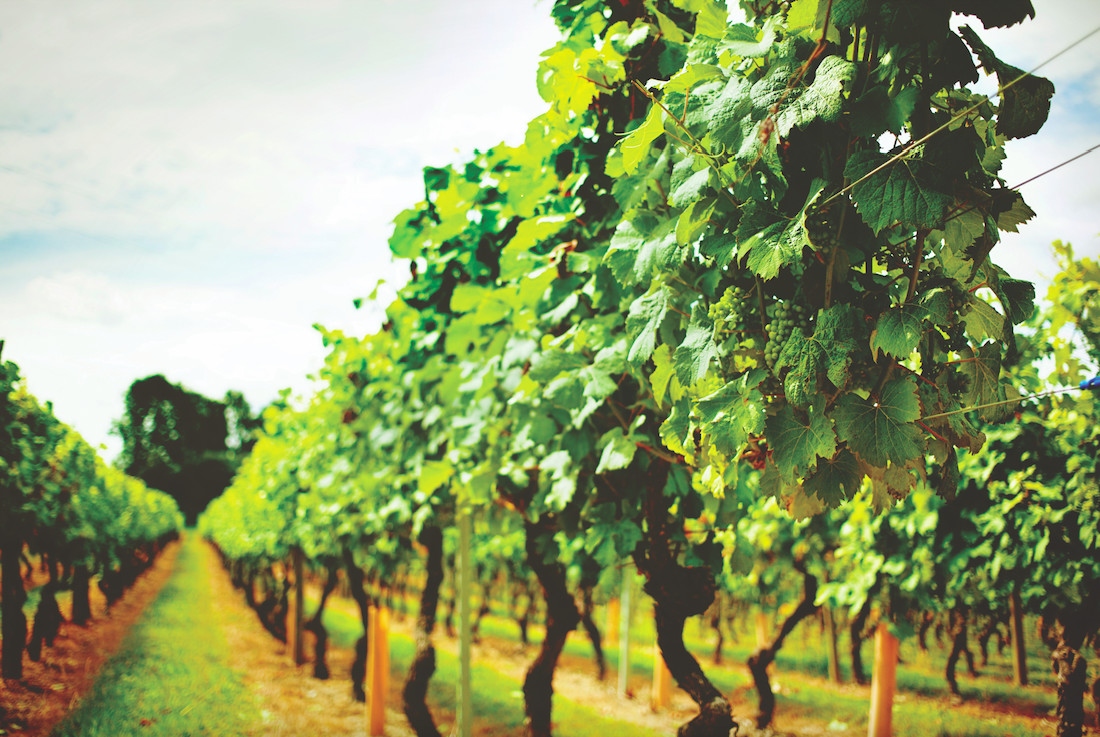
English still wines have famously lagged behind their fizzy counterparts, but Joe Wadsack says things are on the cusp of change.
It has not escaped most people’s attention that England is a wine-producing nation, an increasingly confident and proud one at that. Even I still find this a bit of a novelty – when I started my journey into wine, decent English wine was basically fiction. In that era, no one could have imagined the speed at which an apparently novel agricultural industry could grow to be so thriving and profitable. But the fact is, we have pretty much always made wine.
Romans grew red wine grapes along Hadrian’s Wall 2,000 years ago for their permanent garrison there, and continued to grow table wine grapes as far north as Lincolnshire until they departed the country. The Domesday Book shows there were 40 functioning vineyards by the time the Normans arrived. By the reign of Henry VIII, there were nearly four times that many, mostly managed my monks and friars, in order to supply wine mainly for use during holy communion. That, as they say, was that, until a small vineyard was planted in Hampshire in 1952 in a village called Hambledon. The Hambledon Vineyard now produces world-class fizz, but started off making still wines only.
So where do we stand with the flat stuff? Why don’t we make more, and could a bar or a pub put together a reasonably interesting wine list just with English table wines? Well, I think it’s fair to say that 10 years ago this would have been extremely difficult. Right now, however, I think we are drifting into a new arena of possibilities. What’s changed?
Climate essentials
A specific number of heat and sun hours are required by each grape variety to ripen fully and make attractive wines, and with red wines, they have to go through a biological process called “veraison” in order to produce wines that are both high enough in sugar and ripe enough in flavour to produce convincing results. With small incremental increases in temperature and sun every year, our southern English climate has only just achieved a magic number, which hugely increases the choice of grape varieties that we could potentially cultivate, especially now that it is warm enough to fully ripen certain nobler red grape varieties. Indeed, many vineyards are now planting interesting varieties in anticipation of the temperature rise over the next five years, so that the vineyards are established in time for their first crop.
OK, so things are about to liven up, but what’s available now? Bacchus is clearly a champion variety in this country, and is capable of making some quite delicious white wines. Warmer conditions allow much more diversity in style, so the available expressions of good Bacchus grow by the year.
Typically, a simple Bacchus makes a lovely, nettley alternative to a light Sauvignon Blanc, but it has shown great potential as an orange wine, where the wine is fermented on its skins like a red wine. The tannins and shape of the best of these could easily be consumed with a crispy roast pork belly or a wild mushroom risotto. Also, if picked late enough, Bacchus can cope with barrel fermentation or oak ageing extremely well.
At present, the choice of varieties available to us are largely a legacy of old vineyards and what was considered wise practice 30 years ago. Or young vineyards that hope to make it into a bottle of English fizz, where high profits and a high retail price are far more easily justified. Why plant something cool if you can just plant Chardonnay and make at least twice the money?
We are, however, on the threshold of a new creative explosion, where people are finally seeing new opportunities for still wines on everyone’s local wine list, and varietal choice will be one of passion and exploration rather than just profit.
Below is a short list that I could put together for a bar right now. Where there is a lack of apparent variety in the grapes, there is a surprising diversity in provenance, with seven counties covered here alone.
Prices quoted below are full retail prices, so two to three times the price should be achievable on a wine list.
HOUSE WINE
Flint Dry 2020 Tenterden Estate, Chapel Down, Kent
£10.99 (approx)
A Bacchus-based blend with legacy English varieties blended in. Crisp and bursting with English hedgerow aromas. Great aperitif and food wine at a fair price.
Giffords Hall Rosé 2020, Bury St Edmunds, Suffolk
£14.50 (approx)
A bright, cranberryish and redcurrant rosé with tons of zing. Like a Sauvignon Blush. Lovely with oysters or asparagus.
Grower’s Selection Madeleine Angevine 2018, Sharpham Estate, Devon
£14.50 (approx)
Light of foot, mouthwatering, almost sherbetty peach and apple fruit. Moreish.
Winbirri Vineyards Bacchus 2019, Norfolk
£15.99 (approx)
Pristine elderflower, apple and melon aromas, with a juicy, crisp palate of Pink Lady apple mousse. World-class Bacchus.
Litmus Orange Bacchus 2020, Surrey
£15.99 (approx)
To my mind, the most creative and currently best table wine in England. Creamy, fuzzy apricots with clean slatey minerality and a suedey grip from the tannins. Serve with a shellfish stew.
Balfour Skye’s Blend Chardonnay 2019, Kent
£20.00 (approx)
A dead ringer for a creamy lemon soufflé-styled southern French Chardonnay. Wonderful, mouth-filling and ripe.
Bolney Estate Pinot Noir 2020, Sussex
£17.99
Simple but beautifully varietally pure, with sleek English strawberries and a silky texture.
The Red Miller Pinot Meunier 2018, Kent
£45.00 (approx)
Balfour Winery is the state of the art when it comes to English red wines. Ethereal, sleek, strawberry and cherry flavours, with a very Burgundian kiss of herbs on the finish. Delicious.


